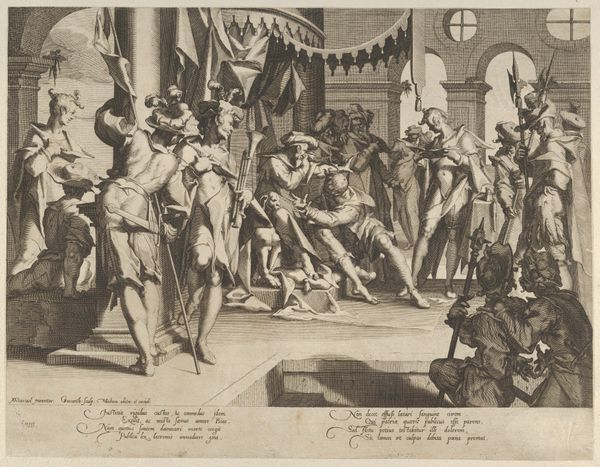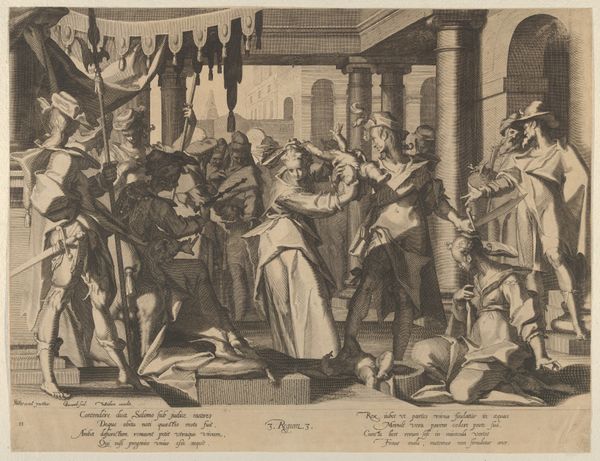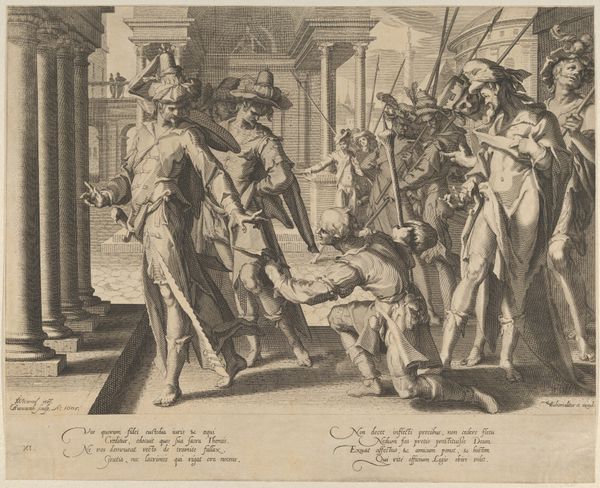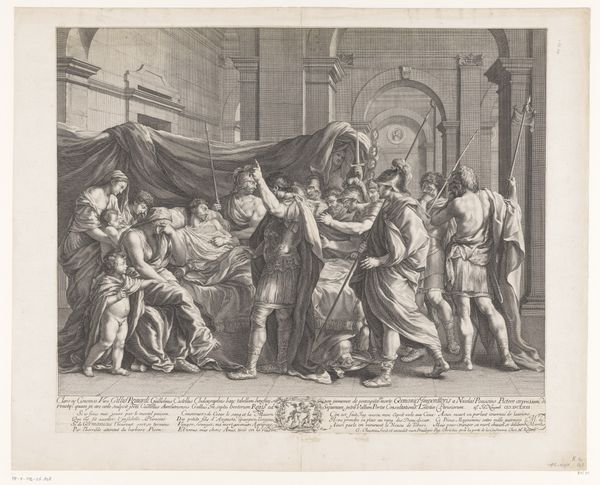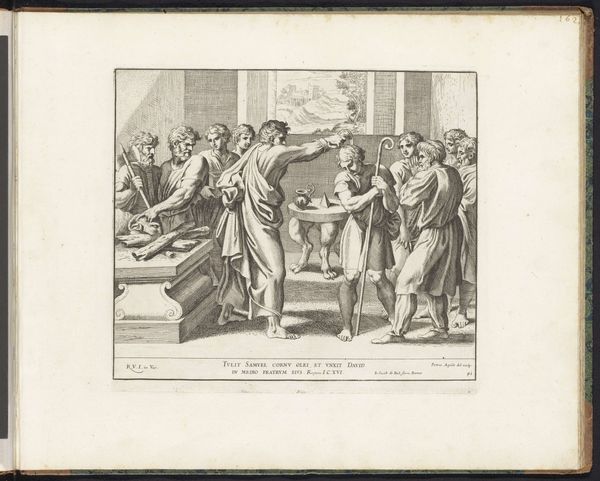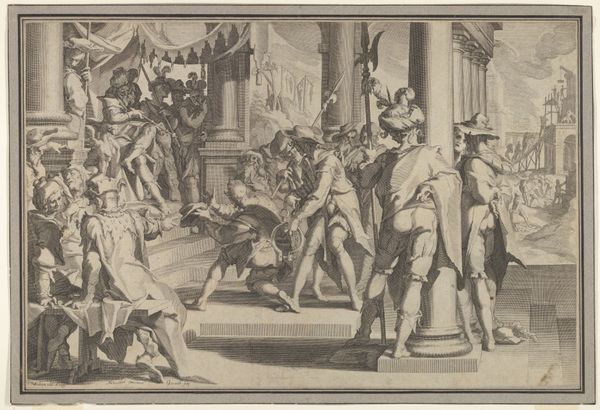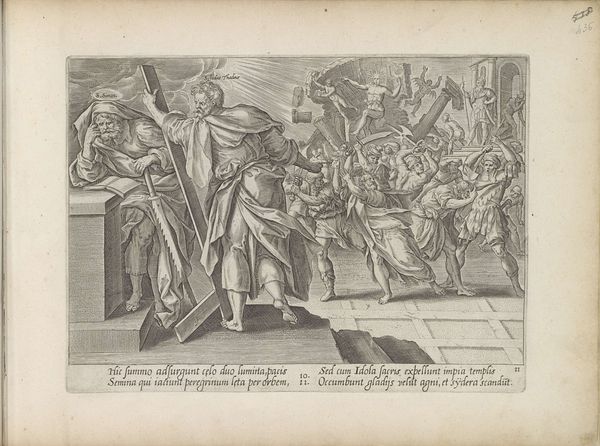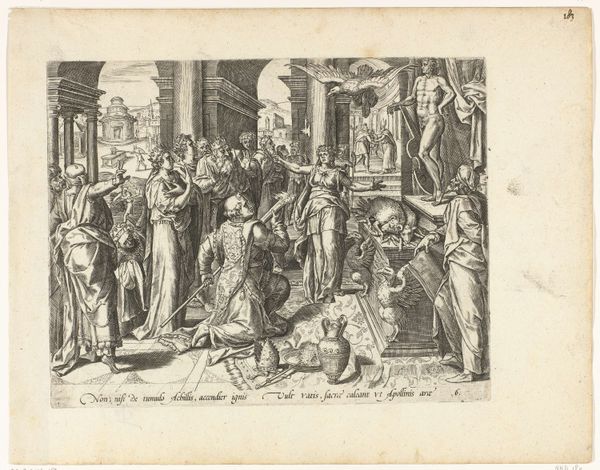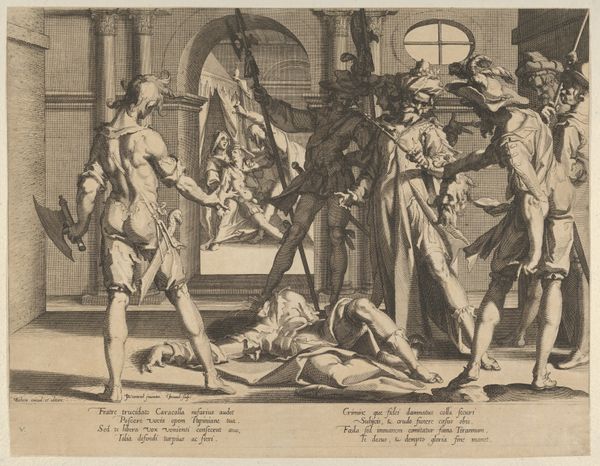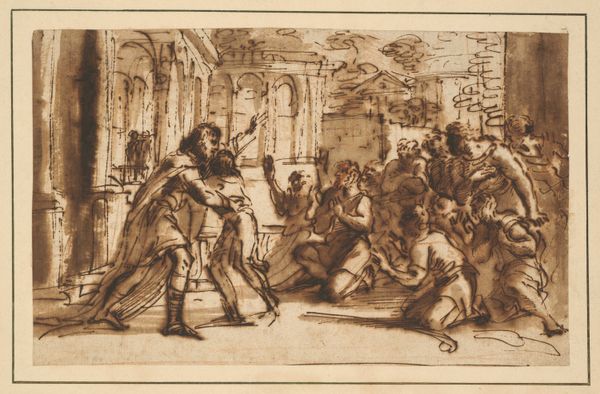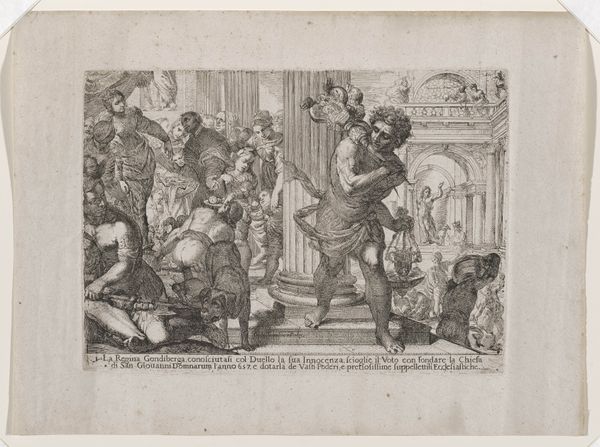
Cambyses Commanding the Flaying of the Judge Sisamnes, from Thronus Justitiae, tredecim pulcherrimus tabulis..., plate 6 1605 - 1606
0:00
0:00
drawing, print, etching, architecture
#
drawing
#
narrative-art
#
baroque
# print
#
etching
#
figuration
#
11_renaissance
#
soldier
#
arch
#
men
#
line
#
history-painting
#
architecture
Dimensions: Sheet: 11 13/16 × 14 15/16 in. (30 × 38 cm)
Copyright: Public Domain
Willem van Swanenburg created this engraving sometime around the turn of the 17th century. The scene shows a judge being flayed alive under the orders of Cambyses, a Persian king, as punishment for corruption. This image functions as a potent commentary on justice and power, reflecting anxieties about corruption within the institutions of governance. Produced in the Netherlands, a region undergoing significant political and social upheaval during this period, the artwork resonates with the concerns of a society grappling with issues of ethical leadership and accountability. The Dutch Republic was emerging, and this imagery served as a warning against tyranny and abuse of power. To fully understand this piece, one might delve into legal and political treatises from the early modern period, exploring contemporary debates around justice, ethics, and the responsibilities of rulers. The engraving's meaning is deeply rooted in its specific historical and institutional context.
Comments
No comments
Be the first to comment and join the conversation on the ultimate creative platform.
